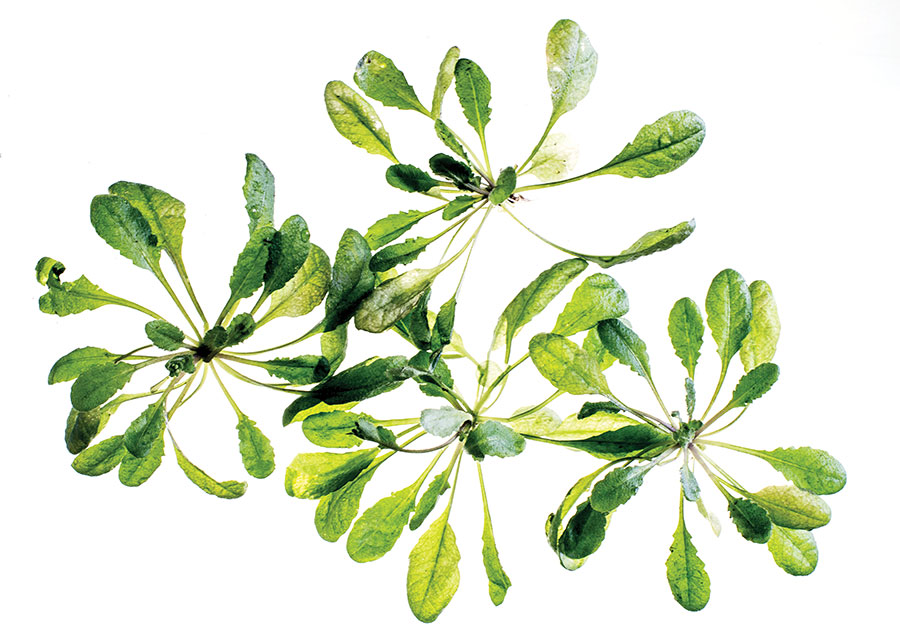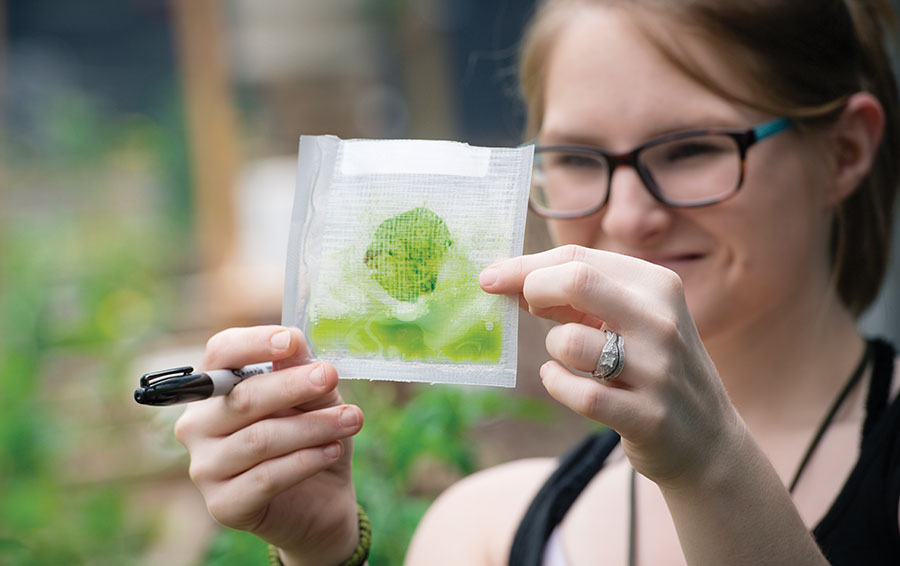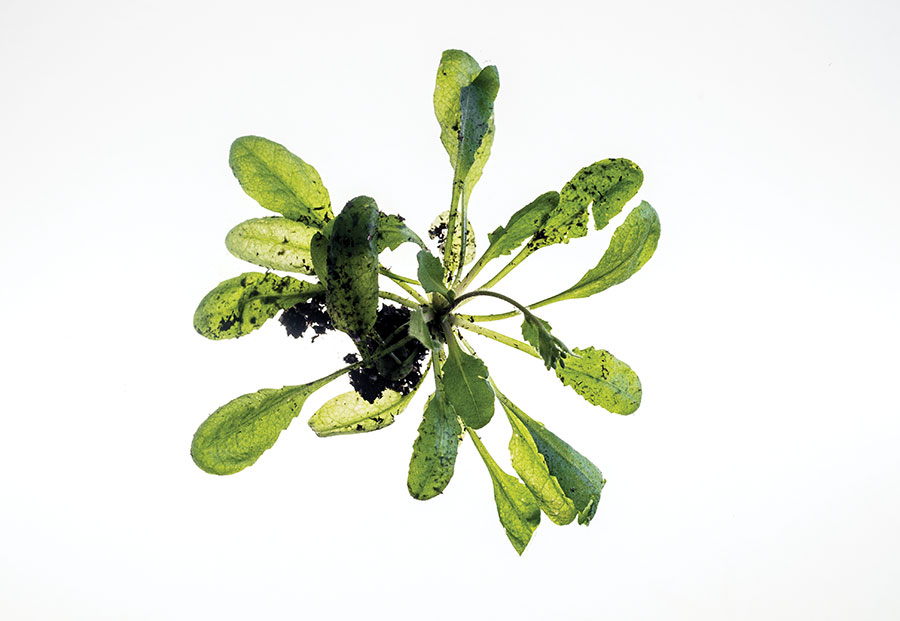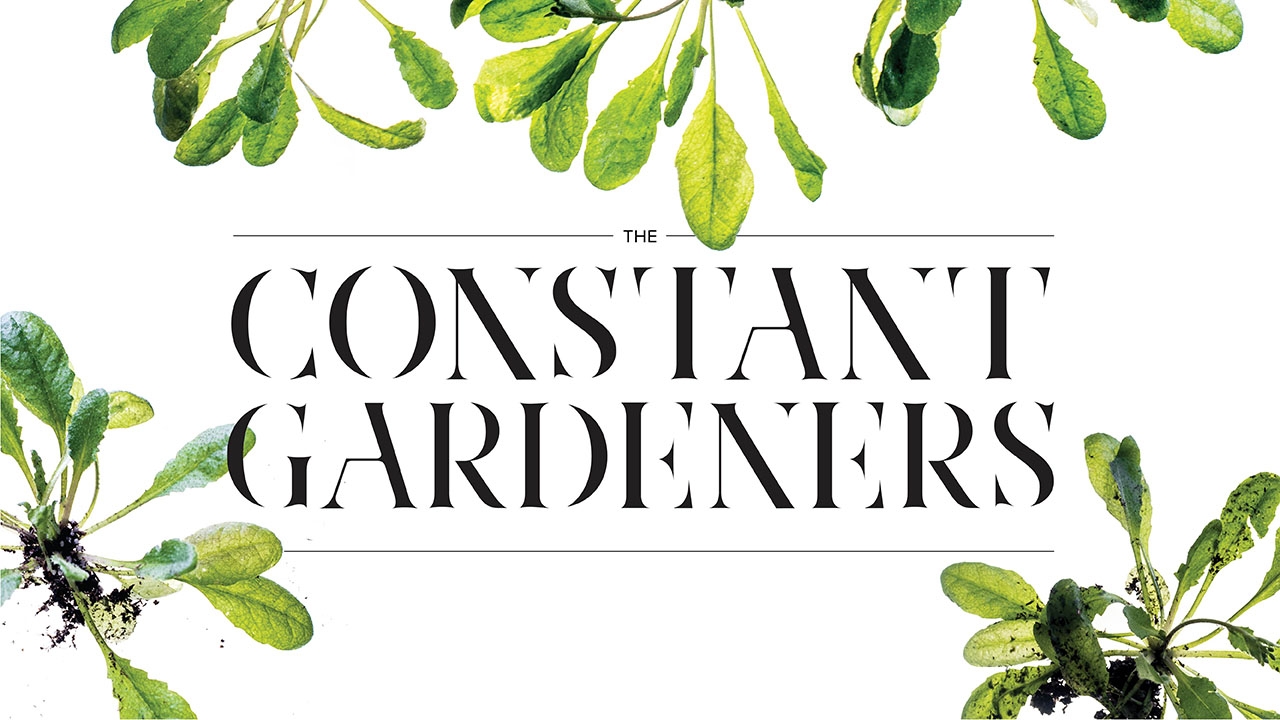Plants have the power to change history.
The most famous example may be the Irish Potato Famine. From 1845 to 1849, a disease known as late blight decimated Ireland’s potato crops, leaving in its wake shriveled, rotted tubers. About one million people died, while at least another million emigrated, with many heading to the United States. The worldwide social and economic impact lasted for generations.
Could something like that happen now? More than 150 years after the epic famine, Karolina Mukhtar, Ph.D., a native of Poland, became fascinated by its trigger—the microscopic battle raging within potato plant cells. She was inspired by the fact that the potato’s immune system—yes, even potatoes have one—fought back against its foe, a strain of water mold named Phytophthora infestans.
That doctoral research, Karolina’s first dive into plant immunology, led to the development of a potato 11 percent more resistant to blight. It also jump-started her career studying plant defense mechanisms. Today, as associate chair of biology in the College of Arts and Sciences, she investigates the molecular response of plants under attack from pathogens like bacteria or fungi, or environmental stressors including severe droughts and hungry caterpillars.
She works alongside another UAB plant immunologist: her husband, Shahid Mukhtar, Ph.D., assistant professor of biology, who studies how plants sense and respond to pathogens. Together, their work could help protect crops vital for feeding the world’s growing population.
 Shahid and Karolina Mukhtar tend a few of their 1,500 to 2,000 Arabidopsis plants.
Shahid and Karolina Mukhtar tend a few of their 1,500 to 2,000 Arabidopsis plants.
A relationship blooms
Shahid met Karolina in Cologne, Germany, in 2002, after both interviewed for the doctoral program at the International Max Planck Research School (IMPRS). As they wandered through the campus gardens, he asked if she could help identify a plant. “I knew it was cauliflower,” Shahid recalls. “I just wanted to start a conversation with her.”
“I thought, ‘Seriously? Cauliflower is your pick-up line?’” Karolina laughs. The couple formed a fast friendship. “It’s great to talk science, bounce ideas off each other, collaborate,” she says.
They joined the inaugural IMPRS class at an exciting time. The first plant genome—from the weedy Arabidopsis thaliana (pictured above and below)—had been sequenced just two years earlier. The plant became a model organism, meaning biologists everywhere decided it was ideal for studying and applying findings to other plants. Its complete genome opened up a world of research. “It was hard not to fall in love with that Arabidopsis excitement,” Karolina says.
She also fell in love with plant immunology—and with Shahid. Weeks before defending their dissertations, the two married with celebrations in Poland and Pakistan, Shahid’s home.

Model Behavior
Why plant biologists love Arabidopsis thaliana
It has a small, simple genome: Scientists can order different mutants of Arabidopsis online, depending upon the gene they want to investigate. And their research and discoveries easily apply to other plant species.
It’s easy to grow: “It’s not picky,” Karolina says. “It doesn’t need a lot of soil or any expensive type of light. We rarely have to fertilize it, and we don’t even have to water it every day.”
It has a speedy life cycle: Within four weeks of sprouting, the plant’s leaves and immune system are ready to study. Soon afterward, it flowers and seeds to begin the cycle again. That means knowledge can be gleaned quickly. “I like instant gratification,” Karolina laughs.
Feeding the future
Every year, up to 30 percent of the world’s crops fail—a big number considering the global demand for food may soon eclipse production. Scientists predict Earth’s population will exceed nine billion by 2050, and the World Bank estimates we will need to produce at least 50 percent more food to keep up with the growth. But we face hurdles, from climate change to the spread of pathogens like a strain of stem rust fungus already hurting wheat crops in Africa and the Middle East. Eventually, such pathogens could threaten crops worldwide and, subsequently, food security.
But Karolina and Shahid are searching for potential solutions with the help of Arabidopsis.
For Karolina, the answers lie in understanding how plants respond to attacks by investigating the “unfolded protein response” within their cells. All healthy plant cells create proteins that go through a folding process—they’re basically packaged up so they can do their jobs throughout the cell. When a cell experiences stress— anything from drought or extreme weather to a pest or pathogen—it will skip that critical folding process, leaving the proteins unfinished.
A cell with a few unfolded proteins can recover by signaling to other parts of the cell for help. But too many unfolded proteins make the cell cluttered and weak, so it self-destructs. Karolina wants to identify the point when the cell gives up, which could lead to the development of a plant more resilient to stress.
Meanwhile, Shahid studies how plant proteins interact to form networks key to growth, development, and other functions. Mapped out, these webs of links resemble networks more familiar to us—Facebook and Twitter—with some proteins having more connections than others, and thus the ability to spread information quickly. But those ties can be targets for invaders. Shahid also is learning how pathogens utilize their own proteins to dismantle plant networks and increase infection.
The largest networks Shahid has generated contain thousands of proteins communicating with one another. Recently, he and a group of researchers outlined the functions of a specific class of 200 Arabidopsis proteins that help the plant sense the environment—think of them as the plant’s eyes, ears, and nose. But everything researchers have mapped so far corresponds to just a fraction of the activities happening within each plant cell. So Shahid is applying network theories and algorithms to predict what the rest looks like. Because different networks tend to follow similar patterns, he can apply models—such as the flow of messages through online social networks—to determine how pathogens and proteins will interact. “If we understand the strategies pathogens use to attack plants, then we can generate plants that anticipate those strategies and be better prepared against pathogenic infection and establish effective disease resistance,” Shahid explains.
To help him explore that uncharted territory, Shahid works with undergraduate and graduate students in his lab. John Hernandez, a senior biology major from Buford, Georgia, applies genetic techniques to Shahid’s predictions, testing the plants’ susceptibility to disease with a genome-editing tool known as CRISPR-Cas9.
Hernandez says this work is preparing him to pursue a Ph.D. and a career developing antibiotics. “It’s innovative, creative learning and understanding the concept of building a hypothesis,” Shahid says. “He is learning from his successes and failures so he can be a better scientist in any field of research in the long run.”
 OUTPACE student Madison Lathem, a senior studying biology, tests a leaf for viral infection at UAB's community gardens.
OUTPACE student Madison Lathem, a senior studying biology, tests a leaf for viral infection at UAB's community gardens.
Growing knowledge
When they joined UAB in 2010, the Mukhtars were the only two vascular plant researchers in a crowd of animal biologists. Their first task was to create a controlled research environment for their specimens, mainly Arabidopsis.
So the couple headed to a home improvement store for tube lights, wire racks, and other equipment. They worked with UAB Facilities to build a space in Campbell Hall and a storage shed at the edge of campus to house soil. (It’s not unusual for 18-wheelers to deliver 100 bags of soil at a time for the Mukhtars, or for the couple to cart around soil in their car trunk.) They also revamped Campbell Hall’s greenhouse, previously used as storage space, and designed sliding tables for growing and observing their plants. “This is our legacy here,” Karolina says about the lab space.
But there is another piece to their legacy: Through teaching and research, they’ve introduced students to plant biology and immunology and prepared them for careers they might not have considered.
One example is the Outreach Plant Pathology Clinic and Education (OUTPACE) research program, an undergraduate summer course that merges plant immunology and service learning. Karolina created the program with funds from a $1.1-million National Science Foundation CAREER award she received in 2014. OUTPACE students split their time between a classroom or lab and UAB’s community gardens.
The gardens were Kaval Patel’s favorite part. There, Patel, a senior neuroscience major from Jackson, Mississippi, and his classmates collected samples from plants believed to be infected by a pathogen, predicted the type of infections, and conducted tests. “We learned in a fun way while helping the community with a problem easy to overlook,” says Patel, who plans to pursue an M.D. and a Ph.D in neurological disorders. “We reported all infections to the plant owners, and it feels good knowing we helped limit the spread of disease.”
The experience also provides other valuable lessons. Plant biologists must learn to communicate with people outside their field, Karolina says. Doing that requires both “words and respect,” she notes.
More students than ever enrolled in OUTPACE in 2018, an exciting change from eight years ago, when UAB offered no plant biology courses at all. And the Mukhtars are sending students off to careers in environmental sciences, health professions, and research. Or they’re simply opening their eyes to something new.
Kimberly Grace, for example, took OUTPACE to get hands-on experience studying plants. Now Grace, a senior focusing on applied math with minors in biology and environmental science, wants to incorporate what she has learned into research and teaching. “It has broadened my understanding of our environment,” says the Smoke Rise, Alabama, native. “I would like to combine mathematics and my love of the environment in my future endeavors.”
Seeds of success
The students quickly grasp the major challenge facing plant biologists: There is no quick, simple solution to building a plant’s resistance against a pathogen, at least not now. But an incremental approach could be key to protecting the world’s food crops, say the Mukhtars. Think of the potato Karolina helped develop that is 11 percent more resistant to blight than its predecessor. “Having 11 percent more of a crop is no small contribution,” notes Karolina. “This is like plant medicine, though we rarely heal the patient. But we do produce the next generation that may do better.”



